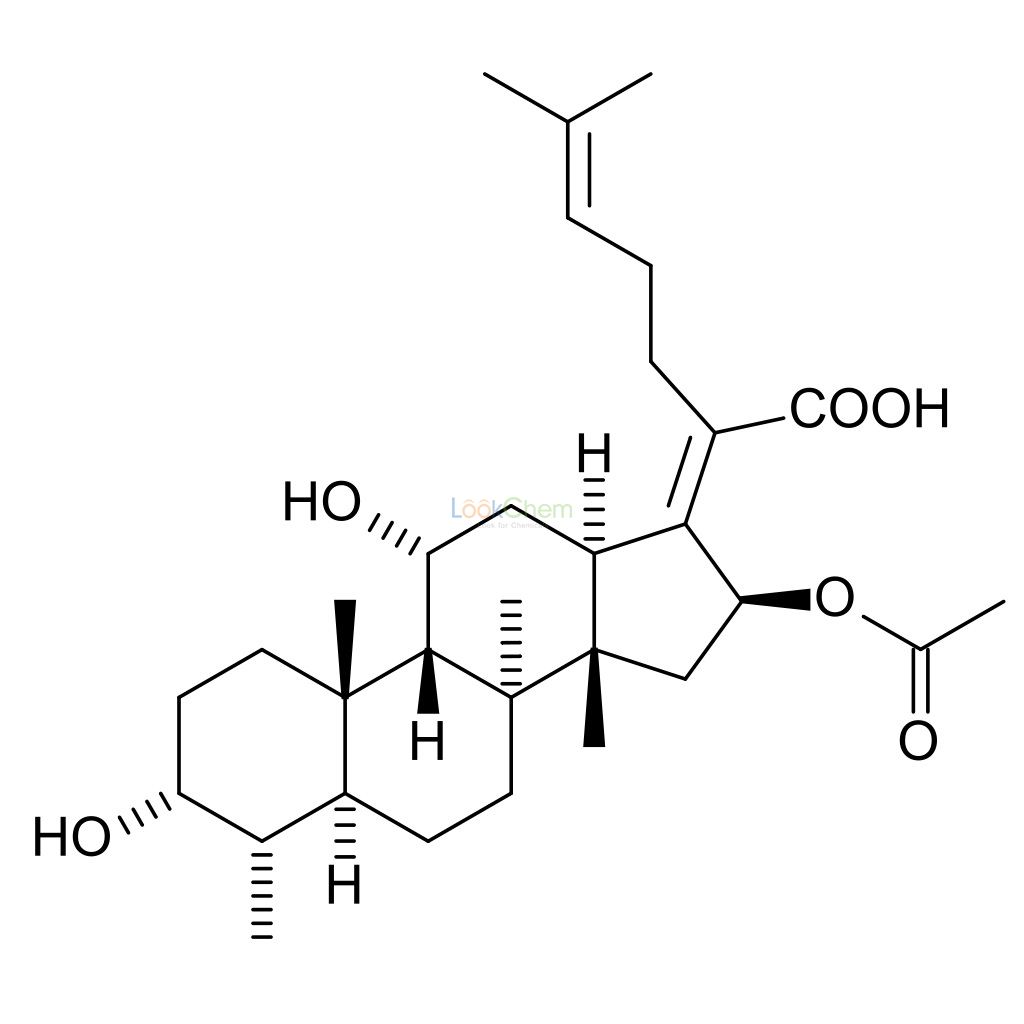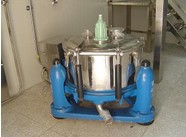Product Description
Fusidic acid

- 6990-06-3
- C31H48O6
Brief Description
| Product name | Fusidic acid |
| Synonyms | fusidic acid; Fusidine; 16-(Acetyloxy)-3,11-dihydroxy-29-nordammara-17(20),24-dien-21-oic acid |
| MOQ | 25KG |
| CAS No. | 6990-06-3 |
| Appearance | An almost white powder |
| Molecular Formula | C31H48O6 |
| Molecular Weight | 516.7092 |
| Assay | 99% |
| Application | Pharma grade or research purpose |
| Packing | As per your request |
| Storage | Preserve in tight, light-resistant containers in a cool place |
| Remarks | NA |
| Custom synthesis | Available |
| Supply Ability | 10000kg/month |
Medical use
Fusidic acid is active in vitro against Staphylococcus aureus, most coagulase-positive staphylococci, Beta-hemolytic streptococci, Corynebacterium species, and most clostridium species. Fusidic acid has no known useful activity against enterococci or most Gram-negative bacteria (except Neisseria, Moraxella, Legionella pneumophila, and Bacteroides fragilis). Fusidic acid is active in vitro and clinically against Mycobacterium leprae but has only marginal activity against Mycobacterium tuberculosis.
One important clinical use of fusidic acid is its activity against methicillin-resistant Staphylococcus aureus (MRSA). Although many strains of MRSA remain sensitive to fusidic acid, there is a low genetic barrier to drug resistance (a single point mutation is all that is required), fusidic acid should never be used on its own to treat serious MRSA infection and should be combined with another antimicrobial such as rifampicin when administering oral or topical dosing regimens approved in Europe, Canada, and elsewhere. However, resistance selection is low when pathogens are challenged at high drug exposure. An orally-administered mono-therapy with a high loading dose is under development in the United States.
Topical fusidic acid is occasionally used as a treatment for acne vulgaris. As a treatment for acne, fusidic acid is often partially effective at improving acne symptoms. However, research studies have indicated that fusidic acid is not as highly active against Propionibacterium acnes as many other antibiotics that are commonly used as acne treatments. Fusidic acid is also found in several additional topical skin and eye preparations (e.g. Fucibet), although its use for these purposes is controversial.
Fusidic acid is being tested for indications beyond skin infections. There is evidence from compassionate use cases that fusidic acid may be effective in the treatment of patients with prosthetic joint-related chronic osteomyelitis.
Our Factory:


